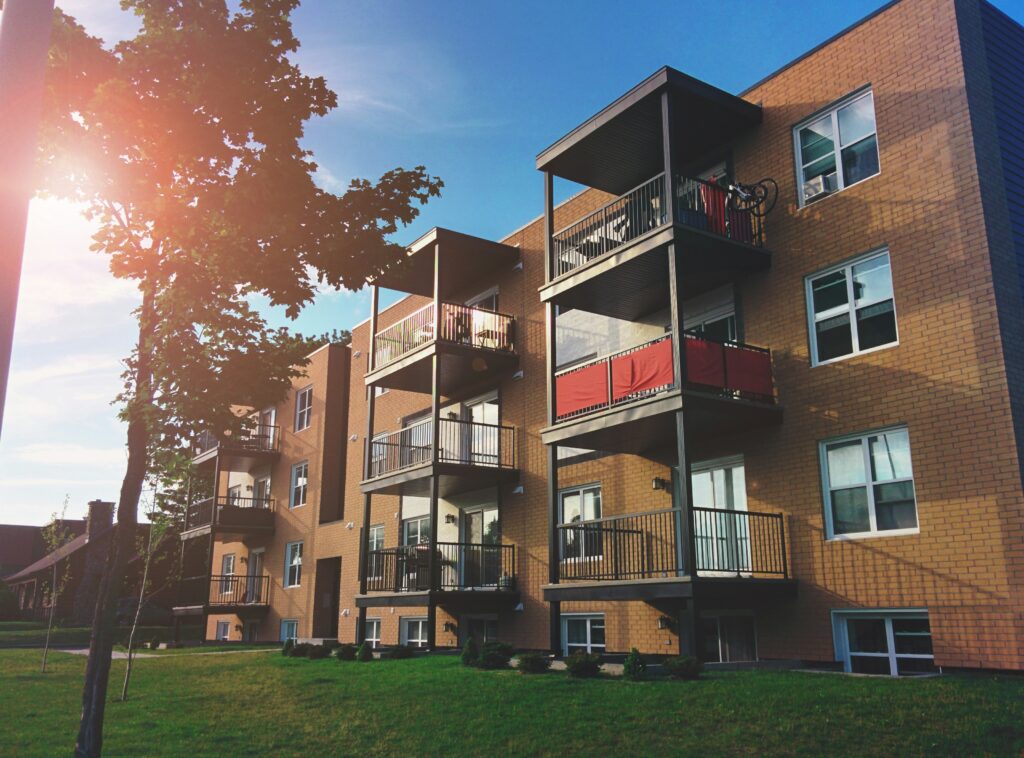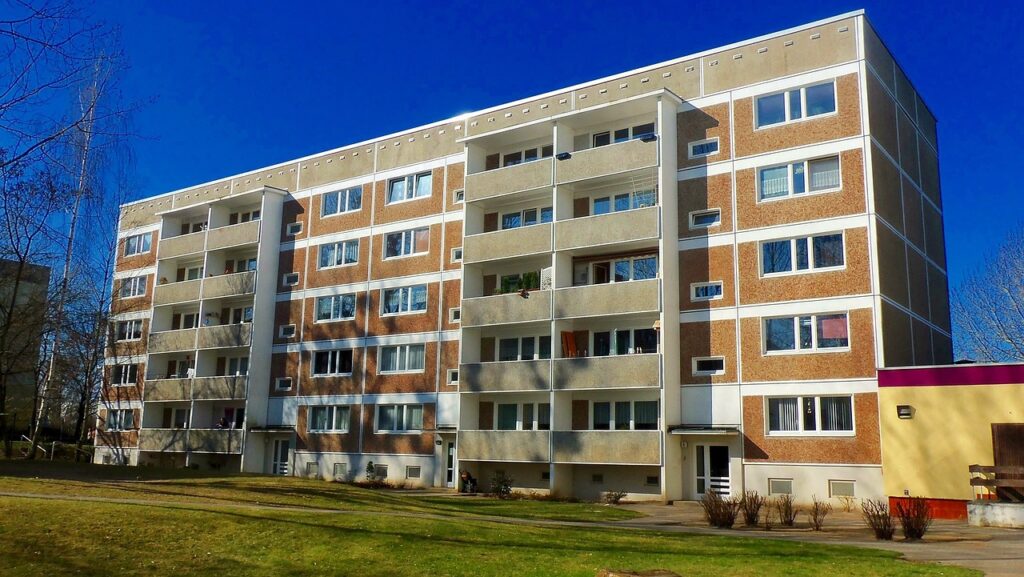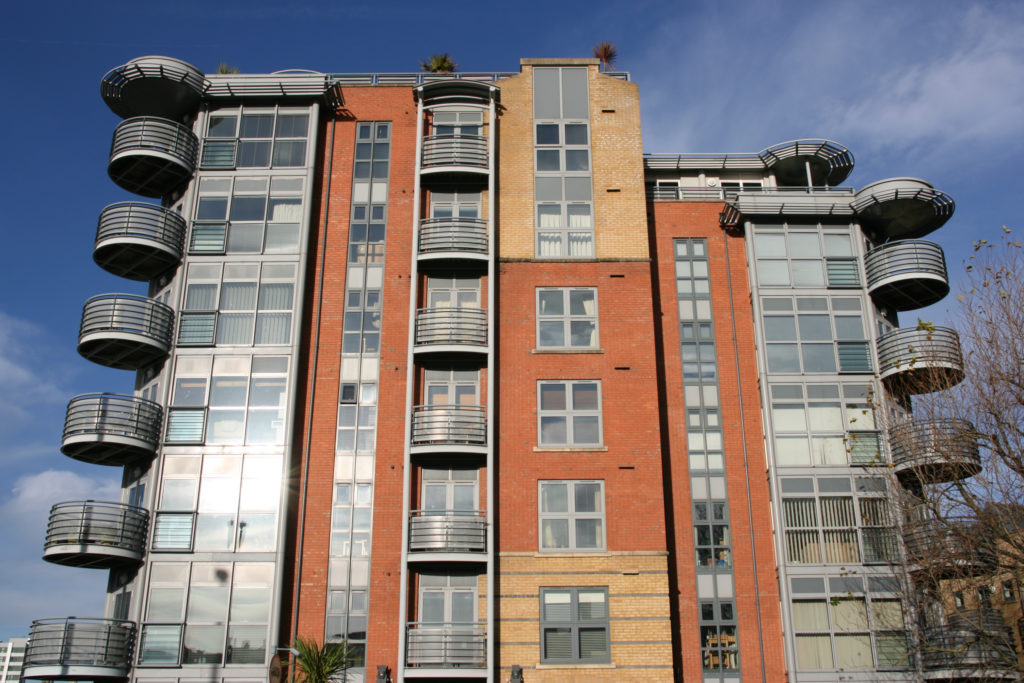For the millions of people living in leasehold flats across the UK, the annual service charge bill is a significant and often confusing expense. Understanding what this charge covers, how it’s calculated, and what your rights are is essential for any leaseholder.
But these charges, which cover the costs of maintaining the building and communal areas, have been rising sharply in recent years.
In fact, the latest data has highlighted a significant rise in these costs, with the average annual service charge for a leasehold flat in England and Wales increasing by 11% to around £2,300 – a rise well above the rate of inflation. This steep increase means that for many leaseholders, service charges are now the largest household expense after their mortgage or rent.
This surge has affected millions of people living in leasehold flats across the country, with average service charges now reported to be above £2,000 in every region of England.
From older converted properties to high-end new builds, service charges are a growing financial expense that all leaseholders need to understand.
What are service charges?
A service charge is a fee collected by landlords, resident management companies, or their appointed managing agents from leaseholders to pay for the cost of maintaining the building and any communal areas and services.
For leasehold flats, these charges are set out in the lease agreement and may include a wide range of services and responsibilities. These responsibilities can include everything from repairs and cleaning to insurance and staff wages. The service charge is a leaseholder’s contribution towards these costs.
It is common practice for service charges to be collected in advance, usually on an annual or bi-annual basis, this is determined by the wording in your lease/transfer. This means the calculation is based on an estimate of the costs that will be incurred in the coming year. While this can sometimes make the charge seem high, it is a necessary practice to ensure funds are available to pay for services and to prevent residents from receiving unexpectedly large bills when major work is required.
What do service charges include?
Generally, service charges cover the shared costs of running and maintaining a residential building.
These might include the cleaning and lighting of communal hallways, servicing of lifts, gardening of shared outdoor spaces, and the upkeep of internal and external common areas. Building insurance is usually included, as are fees for any property management services provided. In some cases, costs for security, concierge services, or amenities like gyms and pools are also factored in.
The specific services covered by the charge will be detailed in the lease. However, they typically fall into several key categories:
- Day-to-Day Running Costs: These are the regular, ongoing expenses required to keep the building running smoothly. This includes cleaning of communal areas (hallways, stairs, windows), gardening and grounds maintenance, electricity for common parts, and lift maintenance.
- Repairs and Maintenance: This covers the general upkeep and repair of the building’s structure and shared facilities. This could include fixing a leaking roof, repairing communal entry doors, or addressing plumbing issues in shared pipework.
- Cyclical Expenses: These are for tasks that occur less frequently but on a regular cycle. This includes things like the redecoration of interior and exterior communal areas or the periodic servicing of building-wide systems like water pumps or ventilation.
- Building Insurance: Dependent on what the lease states, the landlord or RMC is usually responsible for arranging insurance for the entire building, and the cost of this premium is recovered from leaseholders through the service charge. This does not cover the contents of the individual flat. For estate charges, this would for Public Liability Insurance.
- Management Fees: If the landlord uses a professional managing agent to manage the building, their fee will be included in the service charge. This covers the administrative work of collecting charges, arranging services, dealing with contractors, and ensuring legal compliance.
- Health & Safety and Compliance: Landlords have a legal duty to ensure the building is safe. Costs include things like Health & Safety, fire risk assessments, PAT testing of communal electrical equipment, and inspections of things like lightning conductors or asbestos surveys. Recent changes, like the Building Safety Act, have also introduced new costs for some buildings.
- On-site Staff: In larger developments, there may be on-site staff such as a concierge, porter, or building manager. Their salaries and associated employment costs are paid via the service charge.
Importantly, service charges usually incorporate contributions to a reserve or sinking fund. A portion of the payment is set aside into a reserve fund to build up a sum of money for future major works or emergencies. This proactive approach ensures that funds are available for infrequent but costly, long-term replacements like a new roof, window replacements, or major structural works, avoiding the need for a sudden, large one-off bill for residents.
Who pays service charges?
Service charges are paid by the leaseholders of each flat in the building. The lease agreement sets out how the total charge is divided among the flats. In some cases, the charge may be split evenly, but more commonly it is apportioned based on the size of each flat or the number of bedrooms, with larger flats paying a higher share. Leaseholders are legally obliged to pay their share of the service charge as defined in the lease.
Freeholders who own a house on a managed estate may also pay a service charge (sometimes called an estate charge) for the upkeep of shared amenities like private roads, gardens, or street lighting.

How much is a service charge on a flat in the UK?
There is no fixed cost for service charges, and the amount can vary dramatically from one property to another. Typically, you might expect service charges for a standard flat to be in the region of £1,500 to £2,500 per year, but they can be significantly lower or substantially higher depending on several key factors.
The location of the property is one of the most significant influences. Flats in larger cities, and especially in the capital, London, tend to have much higher service charges due to the higher costs of labour, insurance, and utilities.
Other contributing factors include the type and age of the building. Older buildings may require more frequent repairs and upkeep, while new-build developments often include premium amenities such as concierge services, gyms, swimming pools, or landscaped gardens, which increase ongoing maintenance costs. The number of flats in the building can also affect the charge, as costs are divided among more or fewer residents.
What is the average service charge for a flat in the UK?
New data suggests the national average service charge for a flat in the UK now stands at around £2,300 annually, and this figure is steadily increasing. Every region in England now reports average service charges in excess of £2,000. In developments where there are fewer communal facilities or in older properties with minimal shared spaces, service charges may be lower, but even then, the costs can be substantial.
Notably, areas in the north-east and north-west England have seen average service charges increase by more than 57% and 60%, while southern regions have experienced comparatively smaller rises of around 27%. Despite these regions historically offering lower maintenance costs compared to the south, this data shows a sharp upward trend that demonstrates a shift in the national landscape of leasehold expenses.
The Property Institute’s 2024 Service Charge Index further highlights that service charge costs for estates have risen by 41% in the last five years, far outstripping general inflation.
What is the average service charge in London?
The average service charge London leaseholders pay is notoriously higher than the rest of the country. This is due to the increased cost of living and the presence of high-end developments with enhanced services. It is not unusual for service charges in London to exceed £3,000 or £4,000 per year, especially in newer developments with added amenities or in prime central locations. This is driven by higher costs for everything from cleaners and contractors to insurance premiums and management fees.
What is a reasonable service charge on a flat?
Legally, all service charges must be “reasonable”. This means two things: the costs must have been reasonably incurred, and the work or services provided must be of a reasonable standard. For example, it would not be reasonable to hire an overly expensive contractor when a more affordable and equally competent alternative was available.
Determining what is a reasonable service charge on a flat depends entirely on the building type, its location, and the services provided, but transparency and fairness are key. It should be based on genuine estimates, transparently broken down, and properly apportioned among leaseholders.
A £5,000 per year charge might be perfectly reasonable for a large flat in a central London block with a concierge and gym, whereas the same charge would be completely unreasonable for a small flat in a converted building outside of the capital with no shared amenities outside of a communal hallway. The key is that the charge must fairly reflect the actual costs of the services being provided.
Who sets service charges?
Service charges are usually set by the landlord or the managing agent responsible for the property. They prepare a budget for the coming year, estimating the cost of services and maintenance, and divide this among the leaseholders according to the terms of the lease. The lease should specify how these costs are to be shared – either equally among flats or based on factors such as floor area or number of bedrooms.
In some cases, particularly in developments with a Residents’ Management Company (RMC) or Right To Manage (RTM) company, leaseholders have more control and involvement in setting and reviewing service charges.
How are service charges calculated?
The calculation of service charges is based on a forecast of the costs expected to be incurred in managing and maintaining the building over the next year.
The process of calculating service charges involves two main steps: estimating the total cost and then apportioning it between the leaseholders.
First, the landlord or managing agent will forecast all the expected costs for the building for the next service charge year. This involves reviewing current contracts (e.g. for cleaning, gardening, lift maintenance), obtaining quotes for upcoming works, and estimating variable costs like utilities and repairs. They will also factor in contributions to the reserve fund and any management fees.
Once the total estimated cost for the entire building is established, this total must be divided – or “apportioned” – among the individual flats. The method for doing this is specified in the lease agreement.
Common apportionment methods include:
- A simple percentage split: For example, if there are five identical flats in a building, the lease might state that each pays 20% of the total cost.
- Based on floor area: Each property is given a weighting based on its size (square footage). A larger flat will therefore pay a larger share of the total service charge. This is a very common method.
- Based on the number of bedrooms: Sometimes, a lease might apportion costs based on the number of bedrooms in each flat, working on the principle that this reflects the likely number of occupants.
- Other methods: Some leases may have different or more historic methods of apportionment.
How to calculate average service charges
Generally, the costs covered by service charges can be split into three categories.
- Day-to-day costs. These include cleaning of communal areas, insurance and wages for any staff working in the building.
- Cyclical expenses. These cover tasks which come up infrequently but still routinely, such as exterior and interior decoration or maintenance of drains and pipes.
- Reserve funds. Also known as a sinking fund, it covers the kind of larger and costlier repairs that can crop up unexpectedly, such as roof or window frame replacement or structural works.
However, additional factors may affect the variations in an average service charge from one year to another, such as:
- Major repairs may not be covered, or may only be partially covered, by a reserve fund.
- Particular services may be added or withdrawn over the course of the year.
- Increases in building insurance premiums or rising utility costs.
- Unexpected costs or underestimates in previous budgets may be carried forward.
- Management may introduce changes in how the cost is shared between all leaseholders in the building.
- The management fees being paid by the landlord may increase.
- Some leaseholders may not be asked to contribute to a sinking fund until they are several years into their residency.

Frequently asked questions about service charges for flats
Why are my service charges so expensive?
It is increasingly common practice for service charges to be collected in advance annually, so any calculations will anticipate costs incurred in the coming year. Because of this – and because many of the costs covered apply not only to your flat, but to the wider building and communal areas – there is an element of estimation in the way they are calculated. This practice may at times make the service charge look excessively costly, but it can prevent unexpectedly large bills in the event of emergencies or major repairs.
Several factors are also driving the increase in service charges. General inflation has pushed up the cost of materials and labour. Building insurance premiums have seen huge increases across the market, sometimes rising by over 100%. On top of this, new building safety regulations have introduced significant new costs for inspections, compliance, and remedial works, particularly in taller buildings. If your building has a lot of amenities or requires significant repair work, this will also contribute to a higher charge. The size of your flat and its share of the communal areas also affect how much you pay. Furthermore, Landlord insurance provider “Direct Line for Business” found that service charges for newbuilds are 96% higher than for older properties.
Do I have to pay the average service charge?
You are required to pay the service charge as stipulated in your lease agreement, not the national “average”. However, the average figures can serve as a benchmark to understand whether your charges are broadly in line with typical costs. If your charges are significantly higher, it may be worth reviewing the breakdown and raising any concerns.
Your landlord or managing agent must be able to justify the costs, and there are certain obligations that your landlord must fulfil when requesting service charges. As a leaseholder, you have legal rights to ensure the charges are reasonable.
Any service charge demand notice must include a “summary of rights and obligations”. In cases where this is absent, the leaseholder has the right to refuse to pay until a proper service charge demand is supplied.
Can I dispute my service charge?
Yes. If you believe your service charge is unreasonable or if you suspect poor management, you have the right to dispute it. The law protects leaseholders from excessive charges. You can dispute a charge if you believe the cost for a particular item is too high, if you don’t believe the work was carried out to a satisfactory standard, or if you don’t think a particular service is covered by your lease.
Where a landlord has overestimated the average service charge, it is up to them to decide whether to refund the difference, transfer it to the reserve fund or hold it as a credit for the following year – however, this must be clearly set out in the lease agreement.
How do I challenge my service charge?
The first step is to contact your landlord or managing agent in writing, outlining your concerns and asking for a detailed breakdown of the costs. Under the law, you are entitled to request a written summary of the service charge account, and they must provide it to you. This summary will show how the money has been spent. You can also ask to inspect the receipts and invoices.
If you are still not satisfied after this, you can make an application to the First-tier Tribunal (Property Chamber). This is an independent body that will examine the evidence from both you and the landlord and make a decision on whether the service charges are reasonable and payable. The law cannot define what a reasonable charge is, however the tribunal will make their decision based on the evidence they are presented with.
Can I refuse to pay my service charge?
Refusing to pay without valid legal grounds can lead to serious consequences, including court action or even forfeiture of your lease. If you believe the charge is incorrect or unjustified, you should formally dispute it rather than simply withholding payment. Always ensure any challenge is supported by the lease terms and proper evidence.
The only exception is if the service charge demand you received is not legally valid. For a demand to be valid, it must be in writing and be accompanied by a “Summary of rights and obligations”, which explains your rights as a leaseholder. If this summary is missing, you have the right to withhold payment until a valid demand is issued. However, the correct course of action is always to pay the charge (if you can) and then challenge its reasonableness through the official channels.

